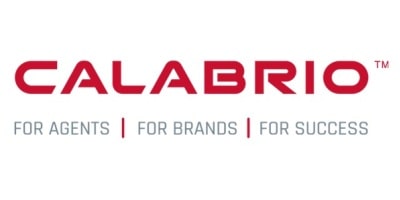Beware Skinny Sweet Shop Owners – Are Contact Centres Missing Out on Tasty Customer Data?
Contact centres are giant candy stores full of rich, tempting data but how do you choose and where do you begin? Jim Davies shares five delicious tips for mastering effective data collation and optimisation.

I remember the good old days when sweet shops existed on every street. The walls were lined with shelves, filled with large plastic tubs of our favourites—rhubarb and custards, pear drops, lemon bonbons, kola cubes, flying saucers… Happy days.
If I owned a sweet shop, I’d be somewhat rotund as I am rather drawn to a sweet or six, apart from evil products like liquorice wheels and dolly mixtures that really need to be banned.
Bringing this ramble around to customer service, I feel the industry is very much like the sweet shop, but with a very slim owner. Our sweets are our data sources. We have a lot of different types and a plentiful supply, but they are just sitting on the shelf being ignored. And, it’s not just me, the latest statistics prove it. While consumers increasingly expect a personalised, seamless experience across all channels, 71% think contact centres are siloed within their organisation and 43% say this negatively impacts the overall customer experience (CX).
So, ditch the New Year diet. We should be gorging on the feast in front of us. After all, you’d never trust a skinny chef so why trust a skinny sweet shop owner?
5 Essential Ingredients for the Perfect Data Pick ‘n’ Mix
While data collection isn’t new, many organisations still aren’t capitalising on the true voice of the customer. There are several steps you can take to manage the gold mine of sweets, well, data coming in and out of the contact centre:
1. Access data holistically
There’s a myriad of sweets in the shop but they are usually in individual jars. Similarly, you’ll probably find your data comes from multiple places, different silos where the perfect customer experience falls into a black hole. Aim for seamless data. Moreover, when you add new channels, make sure they are fully integrated with the rest of the systems in your contact centre. A customer should be able to channel surf and if they do end up speaking with an agent, ensure that agent has access to the full journey and associated information captured along the way.
2. Analyse data properly
It’s not just about buying a great analytics tool, you need the right level of human competency to bring it to life. Dedicate the necessary budget to ensure you have appropriately trained resources to help better understand what all that data really means. Start with the wealth of information held in call recordings and post call surveys – is it chatbot containment? Is it agent availability? Is it agent knowledge? Picking up on the loudest customer frustrations and striving to resolve these will have the biggest impact on CX.
3. Actions not words
Over the past few years, the emphasis has moved beyond collection and understanding of data to actions. Make data insights actionable to drive tangible business value. For example, give a supervisor a top 5 list of to-dos that will have the most impact on their goals. This could be as simple as ‘send Fred on a product training course’ because your data has picked up that a customer was frustrated because Fred couldn’t help them.
4. Be a CX driver
Look beyond the contact centre and work with your Marketing, Sales, Product, and HR teams to identify how the voice of the customer can assist them. Currently, only 28% of contact centre managers admit to sharing data outside their organisation on a daily basis – half are only doing it monthly or even quarterly. It’s time for contact centre leaders to drive CX best-practice across the whole enterprise, whilst encouraging their agents to become brand guardians with the power to influence corporate perception, boost customer loyalty and profits using the data-infused sweets in their store.
5. Feast on the right technology
Speech and text analytics are no longer deemed witchcraft (I recall the days where that was a common perception). They are now proven AI-driven technologies, yet only a very small number of contact centres worldwide leverage them. Agreed, they’re not the cheapest of investments and you need a level of associated competency to get the most out of them, but the calorific rewards are enormous. Think about:
– Operational Efficiency—such as checking for situations that should have been contained within a chatbot dialogue or is a growing potential category for self-service inclusion
– Customer Experience—classic examples are checking for active listening skills versus an improvement in customer sentiment or red-flagging when unnecessary call backs are causing frustration
– Growth—for example, actively looking for qualified opportunities by assessing an agent’s ability to overcome customer objections to a special offer and then coaching them accordingly.
 All of these examples, and the data they unlock, are currently just sat on the sweet shop shelf being overlooked. You will get value from the latest AI-driven tech, I promise, and I encourage you to at least pencil this technology in for serious consideration in 2023 and beyond.
All of these examples, and the data they unlock, are currently just sat on the sweet shop shelf being overlooked. You will get value from the latest AI-driven tech, I promise, and I encourage you to at least pencil this technology in for serious consideration in 2023 and beyond.
To identify other gaps and opportunities that contact centres could be missing, download our latest report: “State of the Contact Centre 2022: Empowering the contact centre as brand guardian.”
![]()
 Calabrio is a trusted ally to leading brands. The digital foundation of customer-centric contact centres, Calabrio helps enrich and interpret human interactions, empowering the contact centre as a brand guardian.
Calabrio is a trusted ally to leading brands. The digital foundation of customer-centric contact centres, Calabrio helps enrich and interpret human interactions, empowering the contact centre as a brand guardian.
We maximise agent performance, exceed customer expectations, and boost workforce efficiency using connected data, AI-fuelled analytics, automated workforce management and personalised coaching.
Only Calabrio ONE unites workforce optimisation (WFO), agent engagement and business intelligence solutions into a true-cloud, fully integrated suite that adapts to your business.
For additional information on Calabrio view their Company Profile



